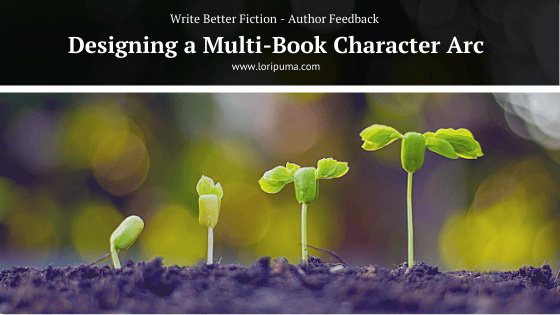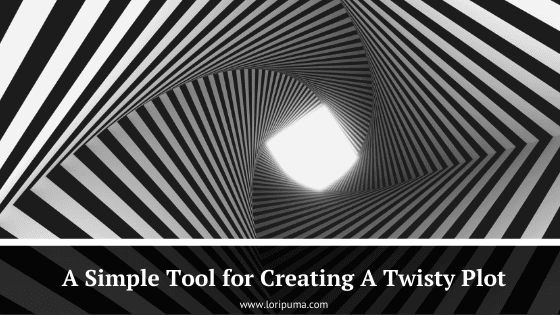The Brain Chemical That Makes Us Care About Characters
/Why do some stories make us care about the characters, yet other don't?
Today, we’ll review experiments that compare the effect of watching one of two video clips about a little boy and his dad on the brain's of video viewers.
One of the clips sparked changes in the brains of study participants, the other didn't. We'll look at how story structure can explain the results.
How the Studies Were Conducted
The studies we’re reviewing today were conducted by the neuroscientist Paul Zak and his colleagues. The researchers were trying to understand how chemicals released by the brain influenced social behavior. Here’s how the studies worked.
When each study participant came into the laboratory, their blood was drawn. Then, they watched one of two video clips about a little boy and his dad. After watching their assigned clip, the participant filled out a questionnaire on what emotions they felt during the clip. Next, some of the participants played an ultimatum game which measured their willingness to share money with a stranger. Other participants did not play the game. All participants had their blood drawn a second time.
The researchers measured the levels of five different chemicals in the blood before and after watching the clip. Although they measured five, we are only interested in the results for one of the chemicals– oxytocin. Oxytocin is important for forming social bonds. If a reader (or viewer or listener) forms an emotional bond with a character in a story, we’d expect the reader’s brain to release more oxytocin.
The Video Clips: A Little Boy Named Ben
In the video below, Dr. Zak describes experiments that his lab did as well as the two video clips that they used in this research.
We’re going to focus on the results about brain chemistry for the video clip that Dr. Zak describes in the beginning of the video compared to the results for the video clip about Ben and his dad going to the zoo (starts at 3:45).
In the first video clip, Ben’s dad shares his struggles enjoying his son, knowing that the boy’s illness is terminal. In the second video clip, Ben’s dad describes a day at the zoo. According to one of the original scientific articles reporting these findings, the second video clip, “has no mention of the child’s illness or any expression of concern for the child”. However, there are some clues as to Ben’s condition in the video. Ben is bald and he's called “miracle boy” at one point.
Results: One Video Clip Is Not Like the Other
After viewing the first video clip, where Ben’s dad shares his struggles, the researchers noted changes in the brain chemistry that suggest study participants cared about Ben and his dad. Participants had increased levels of oxytocin after watching this clip compared to before viewing. Whereas, after viewing the second video clip, where Ben’s dad talks about a day at the zoo, the researchers observed the opposite. Oxytocin decreased.
In the video, Dr. Zak suggests that the reason that study participants respond to the first clip and not the second is because the first clip has a narrative structure that the second clip lacks. Let’s take a look at how the Story Grid would explain the structural differences between these two video clips.
How Story Structure Differs Between Video Clips
One of the basic tenets of storytelling is that every unit of story must have a shift from the beginning to end. A more detailed way to think about creating shifts is to use the Five Commandments of Storytelling. Let’s look at what shifts in each of the video clips and identify the Five Commandments for each one.
Video Clip #1: Ben’s Cancer Story
What shifts? Pure enjoyment to pained enjoyment.
Inciting Incident: A father watches his two year old son with brain cancer play because he finally feels good.
Progressive Complication: The father knows something that Ben doesn’t. Ben is dying.
Crisis: Does the father stay present and enjoy how happy his son is right now or does he let the grief of his son’s impending death overwhelm him?
Climax: He chooses presence.
Resolution: The father expresses his sadness in the knowledge of how little time his son has left and how it will be a constant challenge to enjoy Ben while he’s here.
Ben Goes to the Zoo
What shifts? There is NO shift.
Inciting Incident: Ben and his dad go to the zoo.
Progressive complication: There are no complications.
Crisis: There is no crisis.
Climax: Without a crisis, there can be no climax.
Resolution: Without a climax, there can be no resolution.
What This Means for Your Novel
The experiments from Dr. Zak and his colleague show that a story that follows the Five Commandments of Storytelling has the potential to induce measurable changes in oxytocin - an indicator of caring and the formation of an emotional bond. A story with the same characters that did not follow the Five Commandments, did not lead to measurable differences.
This is only one research group's results, but it’s pretty cool to think that we know at least one change that happens in a reader’s brain when they read a great book and form an emotional bond with a character. While there's probably a lot more going on than just one neurotransmitter change, it’s a safe bet to stick with learning the Five Commandments and writing stories that shift.
If you’d like to see examples of how to fix common mistakes writers make in trying to write stories that make readers care, enter your name and email below. I’ll send you a free guide with examples of each mistake and how to fix it. You'll also hear from me when I write more posts about the science behind storytelling.
If you know a research study I should analyze, send me a link on Twitter.











